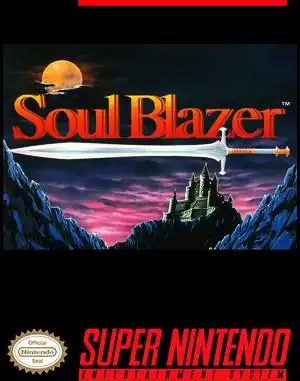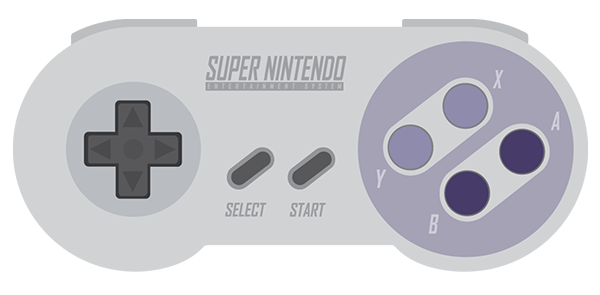Remember those days when renting a Super Nintendo game was the highlight of the weekend? Amidst the flood of platformers and fighters, certain action RPGs offered something truly different. One such gem, often discussed in hushed, reverent tones by those who played it, is Soul Blazer SNES. It wasn't just about hacking and slashing; it was about bringing a world back to life.
Developed by Quintet and released for the Super Nintendo in the early 90s, Soul Blazer stands out with its unique premise and satisfying gameplay loop. While it shares some DNA with contemporaries like The Legend of Zelda, its core mechanic sets it apart, offering a distinct experience that still holds up today.
What Makes Soul Blazer SNES Special?
At its heart, Soul Blazer is an action RPG where you play as a divine warrior sent by "The Master" to a desolate world. This world has been ravaged by the demon Deathtoll, who has sealed away all living souls – humans, animals, even plants and buildings – by trapping them in monster lairs. Your mission is to clear these lairs, defeat the monsters within, and free the captured souls.
But here's the cool part: freeing a soul doesn't just give you experience points or items. It literally restores a piece of the world.
The Core Gameplay Loop: Rebuilding the World
This restoration mechanic is Soul Blazer's defining feature and its most compelling hook.
Clearing Monster Lairs
As you navigate the game's various regions – from peaceful grasslands turned barren to underwater cities and snowy mountains – you'll find areas marked by monster lairs. These are essentially spawn points. Your primary goal in each dungeon-like area is to find and destroy all the lairs.
Freeing Souls and Restoring Life
Once a lair is cleared, a tile on the ground will often light up. Stepping on this tile triggers the release of a trapped soul. This might be a single person, an entire house, a shopkeeper, a bridge, or even just a tree or an animal. Seeing the world slowly return to its former glory, tile by tile, is incredibly rewarding.
The people and creatures you free aren't just set dressing. They populate the nearby town or area, offering clues, items, side quests, or access to new parts of the region. Progress isn't just about getting stronger; it's about literally putting the world back together.
Gaining Power and Progress
As you free souls and defeat monsters, you gain experience to level up, increasing your stats. You also find new swords, armor, and magic spells. Some freed souls might even join you as temporary companions, offering unique abilities. The cycle of clearing lairs, restoring the world, gaining strength, and unlocking new areas feels incredibly cohesive and satisfying.
A World Worth Saving: Story and Atmosphere
While the core plot (divine being sent to fight evil) is classic RPG fare, Soul Blazer's narrative shines in its smaller moments.
The Plot
You are the hero, guided by The Master, tasked with defeating Deathtoll. You'll travel through six distinct regions, each with its own history and inhabitants to save. There's a touching side plot involving Dr. Leo and his daughter Lisa, and uncovering the tragic backstory of how the world fell into ruin adds depth.
The Charm and Music
The real charm comes from the interactions with the restored inhabitants. From talking animals with quirky personalities to grateful villagers rebuilding their lives, these moments make your quest feel meaningful. The game's soundtrack, composed by Yukihide Takekawa, is atmospheric and memorable, perfectly capturing the melancholic beauty of a dying world slowly being reborn.
Soul Blazer's Place in the Quintet Legacy
Soul Blazer is often considered the first in a loosely connected series of action RPGs by Quintet, followed by Illusion of Gaia and Terranigma. While the narrative connections are debated (some see it as a prequel to ActRaiser instead), these games share a thematic focus on creation, destruction, and the fate of the world, along with a distinct aesthetic and gameplay feel that fans affectionately call the "Quintet feel." Playing Soul Blazer provides a fantastic entry point into understanding this unique lineage of SNES classics.
Is Soul Blazer Still Worth Playing Today?
Absolutely! Despite its age, Soul Blazer SNES remains a highly enjoyable action RPG. Its relatively short length (around 10-15 hours for a casual playthrough) makes it accessible, and the unique restoration mechanic keeps it feeling fresh even decades later.
It's simple enough to pick up and play, but has enough charm and atmosphere to keep you engaged. The enduring appeal is evident in the fan community, with interest in speedrunning and even randomizer mods keeping the game alive.
One important note for those looking to play: Soul Blazer has not received an official re-release on modern digital storefronts or console classic collections, unlike some of its SNES contemporaries.
Where to Find Soul Blazer
Since there are no official modern ports, your options are:
- Original Cartridge: Hunting down an original Soul Blazer SNES cart is an option, but be prepared – its status as a beloved, un-re-released classic means prices on the secondary market can be quite high.
- Emulation: For preservation and accessibility, emulation is a common way to experience the game today. Resources like Archive.org offer ways to explore retro software. (Note: Always ensure you comply with local laws regarding game ownership and emulation).
FAQ About Soul Blazer SNES
Q: Is Soul Blazer part of a series? A: Yes, it's often considered the first game in a loose trilogy by developer Quintet, followed by Illusion of Gaia and Terranigma. There's also a fan theory connecting it as a prequel to Quintet's earlier game, ActRaiser.
Q: Is Soul Blazer difficult? A: Compared to some other action RPGs of the era, Soul Blazer is generally considered quite accessible. It's not overly long or complex, making it a good entry point into the genre or for players seeking a less punishing retro experience.
Q: Can I play Soul Blazer on modern consoles like Nintendo Switch or PlayStation? A: As of now, Soul Blazer has not received an official port or inclusion in any modern console's classic game service or collection. It remains tied to the original SNES hardware or emulation.
Conclusion
Soul Blazer for the Super Nintendo is more than just another action RPG; it's a journey of restoration, a charming tale of bringing life back to a broken world, one monster lair at a time. Its unique gameplay loop, memorable atmosphere, and place in the Quintet legacy make it a must-play for any retro gaming enthusiast. If you have a chance to experience this classic, prepare for a satisfying adventure that feels unlike anything else on the SNES.


